CANNABINOL
- CAS NO.:521-35-7
- Empirical Formula: C21H26O2
- Molecular Weight: 310.43
- MDL number: MFCD00056774
- EINECS: 689-788-0
- SAFETY DATA SHEET (SDS)
- Update Date: 2024-12-18 14:15:30
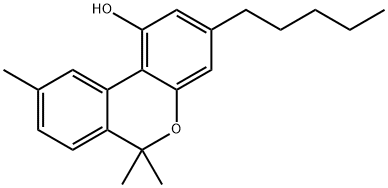
What is CANNABINOL?
Chemical properties
thin platelets
The Uses of CANNABINOL
A metabolite of Tetrahydrocannabinol (T293200). A psychoactive substance cannabinoid that acts as a weak agonist of the CB1 and CB2 receptors.
Definition
ChEBI: Cannabinol is a dibenzopyran.
General Description
Leaflets.
Reactivity Profile
CANNABINOL is an alcohol. Flammable and/or toxic gases are generated by the combination of alcohols with alkali metals, nitrides, and strong reducing agents. They react with oxoacids and carboxylic acids to form esters plus water. Oxidizing agents convert them to aldehydes or ketones. Alcohols exhibit both weak acid and weak base behavior. They may initiate the polymerization of isocyanates and epoxides.
Fire Hazard
Flash point data for CANNABINOL are not available, but CANNABINOL is probably combustible.
Biological Activity
CB 1 and CB 1 receptor agonist (K i values are 126 and 211 nM respectively). Inhibits adenylyl cyclase (EC 50 values are 120 and 261 nM for CB 1 and CB 2 receptors respectively) and suppresses immune cell function. Major constituent of cannabis; displays little or no psychotropic activity.
Purification Methods
Cannabinol crystallises from pet ether and sublimes in a vacuum. [Meitzer et al. Synthesis 985 1981, Beilstein 17 II 151, 17 III/IV 1652.]
Properties of CANNABINOL
| Melting point: | 76-77° |
| Boiling point: | bp0.05 185° |
| Density | 1.0865 (rough estimate) |
| refractive index | 1.4900 (estimate) |
| Flash point: | 11 °C |
| storage temp. | 2-8°C |
| pka | 9.40±0.40(Predicted) |
| Stability: | Stable. Combustible. Incompatible with strong oxidizing agents. |
| EPA Substance Registry System | Cannabinol (521-35-7) |
Safety information for CANNABINOL
| Signal word | Danger |
| Pictogram(s) |
 Flame Flammables GHS02  Skull and Crossbones Acute Toxicity GHS06  Health Hazard GHS08 |
| GHS Hazard Statements |
H225:Flammable liquids H301:Acute toxicity,oral H311:Acute toxicity,dermal H331:Acute toxicity,inhalation H370:Specific target organ toxicity, single exposure |
| Precautionary Statement Codes |
P210:Keep away from heat/sparks/open flames/hot surfaces. — No smoking. P260:Do not breathe dust/fume/gas/mist/vapours/spray. P280:Wear protective gloves/protective clothing/eye protection/face protection. P311:Call a POISON CENTER or doctor/physician. P301+P310:IF SWALLOWED: Immediately call a POISON CENTER or doctor/physician. |
Computed Descriptors for CANNABINOL
New Products
Tert-butyl bis(2-chloroethyl)carbamate (S)-3-Aminobutanenitrile hydrochloride N-Boc-D-alaninol N-BOC-D/L-ALANINOL N-octanoyl benzotriazole 4-Hydrazinobenzoic acid 3,4-Dibenzyloxybenzaldehyde Electrolytic Iron Powder 1,1’-CARBONYLDIIMIDAZOLE R-2-BENZYLOXY PROPIONIC ACID 4-HYDROXY BENZYL ALCOHOL 1,1’-CARBONYLDI (1,2-4 TRIAZOLE) S-2-CHLORO PROPIONIC ACID (2-Hydroxyphenyl)acetonitrile 4-Bromopyrazole 5-BROMO-2CYANO PYRIDINE 5,6-Dimethoxyindanone 5-broMo-2-chloro-N-cyclopentylpyriMidin-4-aMine 3-(Hydroxymethyl)benzoate N-Boc-2-chloroethylamine 1-Bromo-2-methoxy-3-nitrobenzene N-Methyl-3-cyclopenten-1-amine 2-Bromo-3-hydroxybenzaldehyde 1H-indazole-5-carboxamideRelated products of tetrahydrofuran
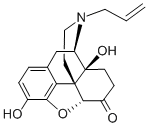

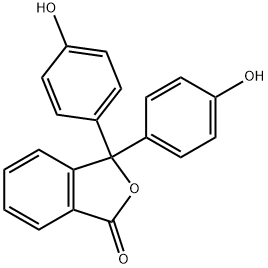
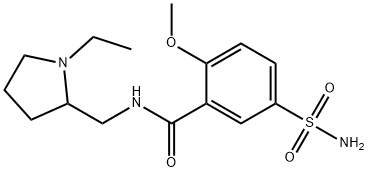


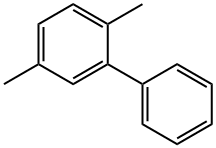
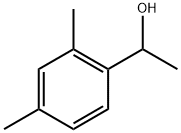
You may like
-
 7441-43-2 98%View Details
7441-43-2 98%View Details
7441-43-2 -
 1260741-78-3 6-Bromo-3-iodo-1-methyl-1H-indazole 98%View Details
1260741-78-3 6-Bromo-3-iodo-1-methyl-1H-indazole 98%View Details
1260741-78-3 -
 (3-Benzyloxypropyl)triphenyl phosphonium 98%View Details
(3-Benzyloxypropyl)triphenyl phosphonium 98%View Details
54314-85-1 -
 4-bromo-3,5-dimethylbenzenesulfonyl chloride 1581266-79-6 98%View Details
4-bromo-3,5-dimethylbenzenesulfonyl chloride 1581266-79-6 98%View Details
1581266-79-6 -
 2490430-37-8 98%View Details
2490430-37-8 98%View Details
2490430-37-8 -
 N-(5-Amino-2-methylphenyl)acetamide 5434-30-0 98%View Details
N-(5-Amino-2-methylphenyl)acetamide 5434-30-0 98%View Details
5434-30-0 -
 124371-59-1 98%View Details
124371-59-1 98%View Details
124371-59-1 -
 53857-52-2 98%View Details
53857-52-2 98%View Details
53857-52-2